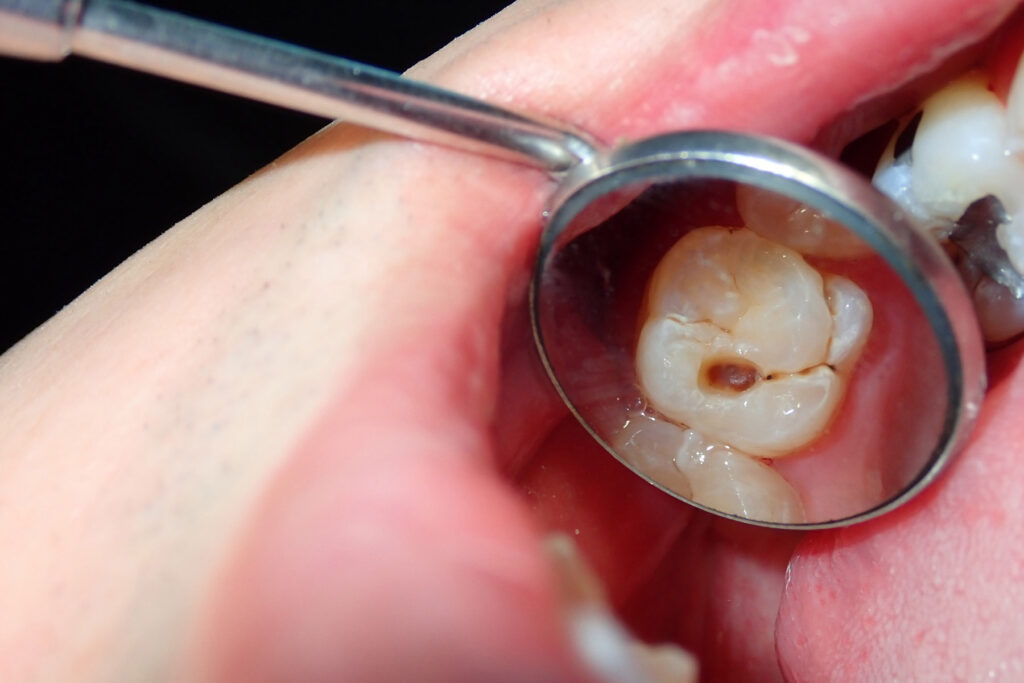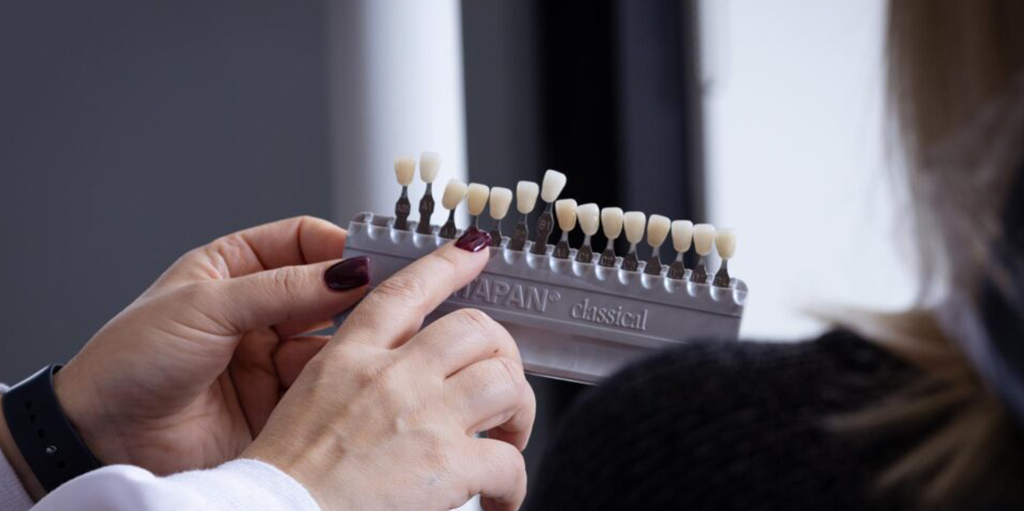Amalgam, or “silver fillings,” have been used as tooth-filling material for over 100 years, and it is made up of a mixture of silver, tin, zinc, copper, and mercury. Although it is a very common dental material, you probably wonder what mercury dental fillings do to your overall health, right? So, we discuss dental fillings and alternatives to dental amalgams in case you have the symptoms of mercury poisoning from amalgam fillings.
What Is a Dental Cavity?
Some teeth damage may generate a hole in your teeth called a dental cavity. If you have a cavity, you should get a filling treatment before it worsens. Leaving the cavities untreated might lead to toothache, bad breath, infection, and tooth loss.
What May Cause Dental Cavities?
Tooth decay is the most common cause of dental cavities. But how is it created? It happens when bacteria consume the leftover food on your teeth and form plaque. These plaques have acids that dissolve the coating on your teeth, causing holes.
Acid erosion is another reason for tooth cavities. Certain foods, drinks, and medicines contain acids that can cause your protective enamel coating to get worn away. Some medical conditions, such as reflux or hiatus hernia, can also have the same effect.
Chipped or broken teeth occurring as part of an injury or after eating something hard can cause cavities by uncovering the internal factors of the tooth, which lead to erosion over time.
Abrasion, caused by grinding or brushing your teeth aggressively, is another factor that can lead to cavities.

What Are Dental Fillings?
When an area on the patient’s tooth has a cavity or is decayed, a dentist uses a dental filling material to fill up the space. The dentist removes the decayed portion of the tooth and replaces it with the filling.
What Are the Different Types of Dental Fillings?
Nowadays, patients are spoilt for choice with the number of different filling materials available. The most popular ones are gold, silver amalgam, and white fillings. In this part, we explain the advantages and disadvantages of each:
Gold Fillings
Gold fillings are less prevalent than before, but they are still used today. They are an alloy of gold, copper, and other metals, and here are their pros and cons:
Advantages of Gold Fillings
- very durable. Gold fillings can last 10 to 15 years or longer, and they do not corrode.
- Gold fillings are strong and can tolerate the strains of chewing.
- Some patients like the look of gold compared to silver amalgam fillings.
Disadvantages of Gold Fillings
- Gold cast fillings are usually ten times more expensive than silver amalgam fillings.
- The patient has to do extra visits when placing gold fillings.
- There is a higher risk of galvanic shock.
- Gold fillings are very apparent. Some patients may prefer fillings that match the rest of the tooth.
Silver Fillings (Amalgams)
Mercury amalgam fillings, often called silver fillings, are used to fill cavities. It is a mixture of metals, such as elemental mercury, and a powdered alloy composed of silver, tin, and copper.
Advantages of Silver Fillings
- Silver mercury fillings are durable. They last at least 10 to 15 years.
- They can tolerate chewing forces.
- They are affordable.
Disadvantages of Silver Fillings
- Silver fillings don’t match the color of natural teeth.
- Healthy tooth sections must be removed to make sufficient space to hold the amalgam fillings.
- Mercury amalgam fillings can create a grayish shade to the surrounding tooth structure.
- Teeth filled with amalgam may experience a higher incidence of cracks and fractures.
- About 1 percent of people are allergic to mercury amalgam fillings.
- Much attention has been placed on the possibility of reproductive hazards, including fertility issues, menstrual cycle disorders, and pregnancy risks.
- Scientific research reveals that children are at-risk for health impairments associated with mercury dental fillings.
- Amalgam fillings can release low levels of mercury in the form of a vapor that can be inhaled and absorbed by the lungs.

White Fillings
Modern-day, mercury-free, resin-based composite fillings (white fillings) are also available for dental filling material. Composite resin fillings are made from plastic mixed with powdered glass to make them stronger.
Advantages of White Fillings
- They match the color of the teeth.
- The dentist doesn’t have to remove a lot of tooth structure
- BPA-free materials can be used.
- Less invasive since no mercury can permeate the structure of the teeth
Disadvantages of White Fillings
- Higher cost than amalgam fillings.
- It needs more time to place than amalgam fillings.
Amalgam vs. Composite
A composite filling is a trendy alternative to Amalgam fillings, designed to match your natural teeth. Composite fillings are newer and typically more expensive solutions, yet Amalgam and composite fillings fit different occasions due to their varying features:
- Aesthetics: The most apparent distinction between Amalgam and composite fillings is their color. Composite fillings blend with the natural color of your teeth, while Amalgam fillings stand out with their silvery hues.
- Treatment Expenses: Amalgam is more cost-effective than composite. Dental insurance plans may not even cover composite fillings, so people sometimes prefer Amalgam.
- Strength: Composite fillings are made of plastic and ceramic compounds. They are strong enough to be applied to any tooth but will not last as long as amalgam fillings and may wear down due to chewing and grinding.
- Health Issues: Amalgam fillings contain mercury, raising health concerns for people who choose a holistic approach to dental procedures.
What Is Mercury-Free Dentistry?
Advanced technology has allowed us to utilize safer methods for dental treatments. Some holistic dentists have taken advantage of this opportunity by employing preventive approaches to eliminate mercury filling toxicity in dental practices.
Mercury is one of the most risk-bearing materials with an unpleasant metal taste which many people are familiar with. Mercury-free dentistry maintains that no metal fillings will be used when treating dental conditions.
Dr. Maryam Horiyat further explains the importance of mercury-free dentistry in this video:
The Symptoms of Mercury Poisoning from Amalgam Fillings
If you have an amalgam filling, you should know that there is a chance you might inhale mercury fillings toxic vapor. The more common symptoms of mercury poisoning from fillings include:
- Feeling weak
- Coughing
- Feeling nauseous
- Headaches
- Bleeding gums
- Twitching muscles
- Trouble breathing
- Feeling nervous and irritable

Not Mercury Safe, But Mercury Free
In this article, we discussed different types of dental fillings and the symptoms of mercury poisoning from amalgam fillings.
Now, it’s time to be protected from mercury filling toxicity. You can find effective solutions at Aria Dental, an accredited member of the IAOMT association with a commitment to ensuring healthy biological approaches for your attractive smile. Contact us to get an appointment for a mercury-free smile for the rest of your life.



















